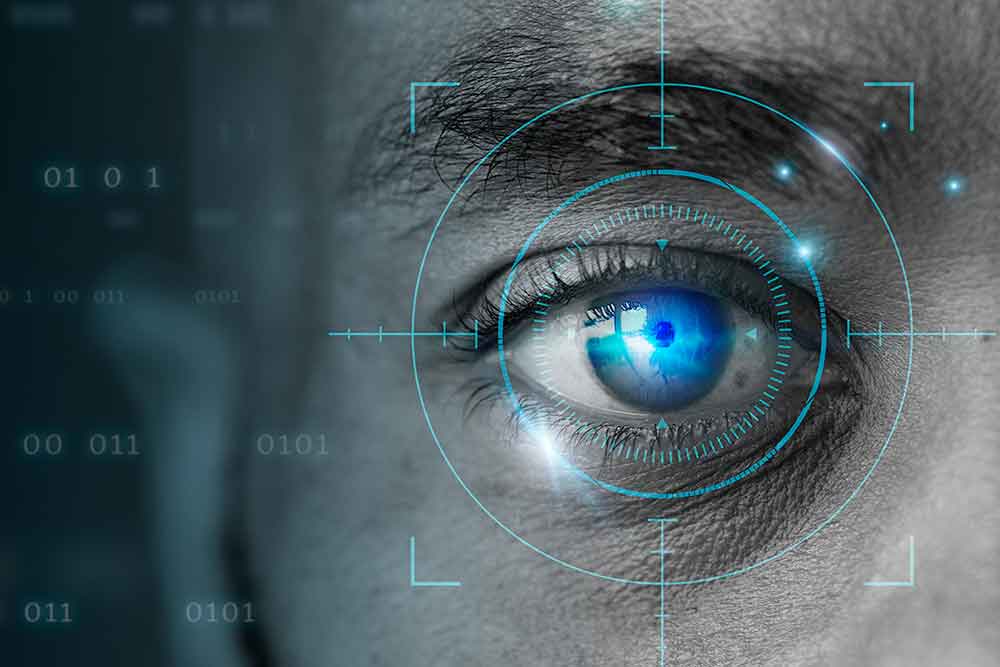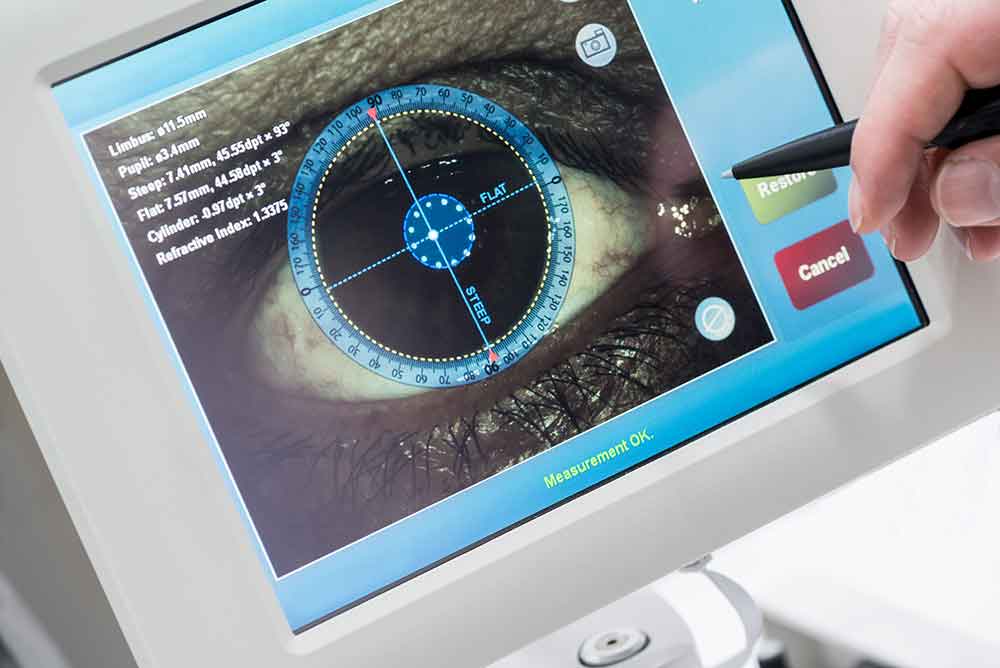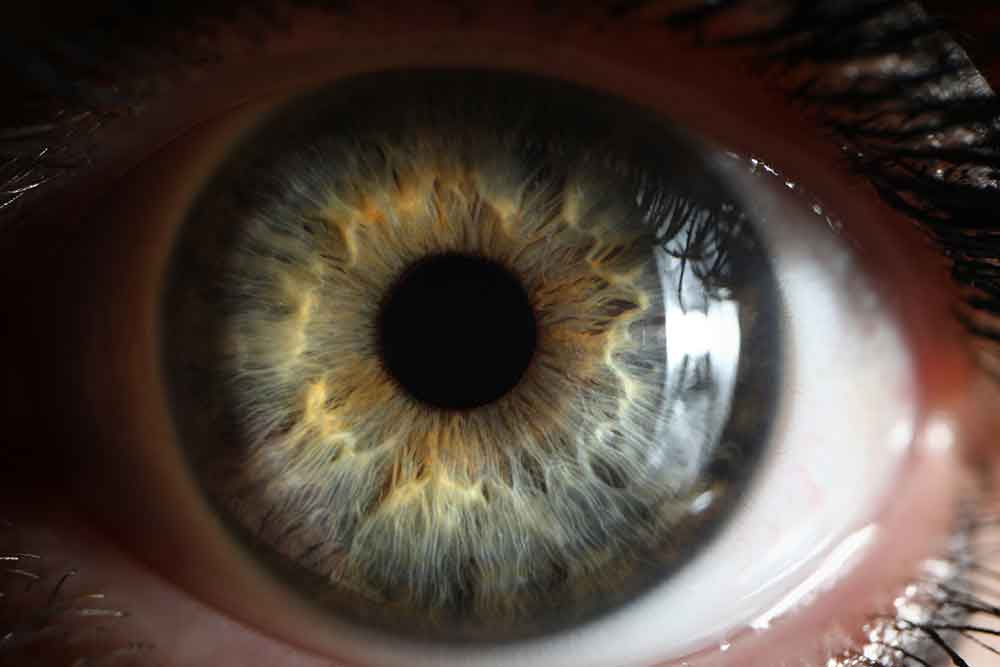
Here, laser-assisted in situ keratomileusis, more commonly known as LASIK, is the most popular form of corrective eye surgery performed today. As of the beginning of 2019, more than 12.5 million LASIK procedures have been carried out in the United States, and more than 30.5 million have been carried out across the world.
LASIK, which stands for laser assisted in situ keratomileusis, is a type of refractive surgery that can cure myopia, hyperopia, and astigmatism. It is also commonly referred to as laser eye surgery or laser vision correction. In LASIK surgery, the cornea of the eye is reshaped with the help of a laser by an ophthalmologist, who does this in order to increase the patient’s visual acuity. The majority of our patients in Mesa choose to get LASIK done because it offers a permanent alternative to wearing spectacles or contact lenses.
Both LASIK and photorefractive keratectomy (PRK) represent breakthroughs over radial keratotomy in the surgical treatment of refractive defects of vision. LASIK is most comparable to photorefractive keratectomy (PRK), which is another surgical correction procedure. The phakic intraocular lens is an alternative treatment option for people with moderate to severe myopia or thin corneas who are unable to undergo the refractive surgery procedures of LASIK and PRK.
The most advanced procedure for correcting vision is known as LASIK. It is short, it is barely uncomfortable, and there is very little to no discomfort following the operation. Recovery of vision is quick; individuals report seeing 20/20 within 24 hours of receiving treatment.
Nearsightedness, farsightedness, and even astigmatism can all be corrected with LASIK. Patients over the age of 40 who use bifocals may be able to minimize or eliminate their requirement for reading glasses by undergoing a procedure known as mono-vision.
An individual who suffers from chronic dry eye, corneal disease, or any other anomalies may be ineligible for LASIK surgery. A complete examination of the eyes is necessary for absolute certainty. We are glad to conduct pre-operative exams and consultations for LASIK procedures here in our clinic for the sake of your convenience.
It is important to keep in mind that LASIK is a process that is done only if the patient desires it, therefore appropriate consideration must take into account the patient’s individual needs, potential benefits, and willingness to assume any associated risks. There is no assurance that the results of your LASIK procedure will exactly match your goals and objectives. The end outcome is not always vision that is without flaw. After LASIK, your eyesight may be permanently cloudier than it was with glasses before you had the procedure done. This is possible in some situations. Before electing to undergo LASIK surgery, one needs to take this potential outcome into consideration.
There is unquestionably potential benefit. LASIK, when performed in normal settings and under normal conditions, has the potential to lessen the amount of reliance you have on glasses and almost always offers you the capacity to operate well without the need for glasses or contact lenses.
The LASIK surgery is performed in an outpatient setting and in two stages. You check in at the surgery center, undergo the treatment, and then leave the facility roughly an hour later. The operation on each eye takes approximately 15 minutes to complete.
To begin, the surgeon will use a device known as a laser to cut a hinged flap of tissue from your cornea. This flap will be very thin. This flap will be folded back in preparation for the beginning of the laser reshaping of your eye. Following the laser treatment, which should take no more than a minute to complete, the surgeon will adjust the flap before moving on to the other eye.

The ablation process performed by a laser in wavefront LASIK, also known as wavefront-assisted LASIK, wavefront-guided LASIK, and bespoke LASIK, is guided by computerized analysis. Procedures that are guided by wavefronts are significantly more accurate than ablations that are decided by using regular prescriptions for eyeglasses. They are able to fix the minor optical abnormalities of the eye known as “higher-order aberrations,” which standard ablations are unable to treat. Studies have shown that wavefront-guided ablations produce sharper vision than traditional LASIK procedures that do not use wavefront technology. These procedures can also improve night vision by removing or minimizing the danger of glare and halos.
In the time immediately following your LASIK operation, you will apply medicated eye drops and cover your eyes with transparent protective shields. You can open your eyes and see clearly enough to get around without wearing glasses, but you shouldn’t get behind the wheel of a car just yet.
In order to ward off infection and expedite the healing process, you will be required to apply antibiotic eye drops many times per day for at least a week. You might also try using artificial tears in order to maintain the moisture in your eyes and maintain their comfort.
On the day of your surgery, you need to get as much rest as you can, especially for your eyes. You could find that leaving the lights in the house on a low or dim setting is more comfortable.
The next day, you should have vision that is good enough to allow you to drive and resume your regular activities. Take extra care not to massage your eyes unless you are certain it is okay to do so. If you are presently using Latisse, you should consult with your eye doctor regarding the appropriate amount of time to wait after surgery before resuming your treatment plan.
It is possible that your eye doctor would ask you to return the next day for a follow-up examination of your eyes. They will want to evaluate your vision and make certain that your eyes seem to be recovering as they should be. You will be provided with any additional instructions that are required about eye drops and/or artificial tears, and you will be given the opportunity to ask our eye doctor any questions that you might have.
Your LASIK surgeon may refer you to another eye specialist for postoperative treatment if they feel more comfortable doing so. Co-management is the term that describes this arrangement. In accordance with a co-management agreement that we have with your surgeon, we will be pleased to provide post-operative care for you here in our office. Ask us for further details.
Although the majority of people report having good vision within a day or two of their LASIK procedure, it may take many months for your eyes to totally stabilize after the procedure. Your eyesight may continue improve in spurts and waves until then, but these changes may be unpredictable. In the event that several months have passed and you notice that your eyesight has not improved, make sure to keep in touch with and see your LASIK surgeon. In order to significantly improve the quality of your vision, a second LASIK procedure, often known as an enhancement, might be recommended.
It may be possible to get by with just using eyeglasses or contact lenses if an improvement is not required. Your vision will be evaluated, and we will go over the many treatment choices that are open to you.

Even though your post-LASIK vision appears to be excellent, you may find that you still need eyeglasses or that you are more comfortable with it.
When you are outside, it is important, and in certain cases quite necessary, to shield your eyes from the sun’s powerful and occasionally damaging rays. Put on sunglasses that block out 100% of the sun’s UV rays. Because of its superior durability and impact resistance, polycarbonate is an ideal material for the lenses of sports sunglasses. Always make sure to wear safety glasses with poly-carbonate lenses whenever you are working with power tools or participating in any other activity that could potentially cause eye damage.
After LASIK, it is highly likely that you will require reading glasses if you are beyond the age of 40 or very close to it. When it comes to nighttime driving, prescription eyeglasses are helpful for many LASIK patients. Even a mild prescription will make your vision sharper, which will increase both your safety and your level of comfort when you are out at night.
After LASIK, it is important to keep your regular eye exams and remember to schedule them. Even if you have 20/20 vision, you should still get your eyes checked at regular intervals to check for glaucoma and any other problems that could arise. After LASIK, you should schedule routine eye exams to assist ensure that your vision does not change.